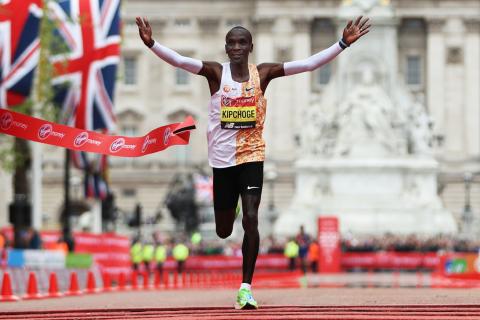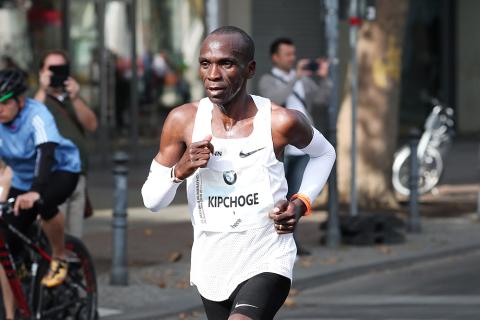
Eliud Kipchoge, widely considered the greatest marathoner of all time, has continuously redefined the limits of human endurance. From winning consecutive Olympic gold medals in Rio 2016 and Tokyo 2020 to breaking the elusive two-hour marathon barrier in an unsanctioned 2019 event, Kipchoge's achievements have made him a legend in the world of distance running. But could science suggest that even more astonishing feats are within his grasp? According to some experts, the possibility of Kipchoge running a marathon in 1:14:12 is theoretically plausible—though it would require incredibly specific and favorable conditions.

Kipchoge’s career is a testament to his unparalleled dominance in long-distance running. His 1:59:40 marathon at the INEOS 1:59 Challenge in Vienna, although not an official record due to the controlled conditions, remains a historic milestone. This achievement made headlines worldwide, as it shattered what was long believed to be an unbreakable barrier in marathon running.
However, Kipchoge faced an unexpected challenge at the 2024 Paris Olympics. For the first time in his illustrious marathon career, he was forced to drop out of the race, citing a pain in his back that began around the 20-kilometer mark. By 31 kilometers, Kipchoge made the difficult decision to withdraw, leaving fans and experts alike speculating about his future in the sport.
In light of Kipchoge’s unmatched prowess, some scientists have speculated about the absolute limits of human marathon performance. A marathon time of 1:14:12—nearly 45 minutes faster than Kipchoge’s current best—would require a combination of optimal factors, including ideal weather conditions, perfect pacing, and perhaps even technological advancements in footwear and nutrition.
While this time may seem outlandish, it’s worth considering the context in which it could be achieved. Kipchoge’s sub-two-hour marathon was made possible by meticulous planning, including pacers, a controlled course, and specialized shoes designed to maximize efficiency. To run a marathon in 1:14:12, similar or even more extreme measures would need to be implemented. This could include a course with a significant downhill gradient, a tailwind throughout the entire race, and even advances in physiological training that push the boundaries of human capability.

After the Paris Olympics, Kipchoge was understandably reflective about his performance and the future. “I don’t want to comment on what will happen tomorrow. I want to try to evolve—if I don’t evolve, then I do other things,” Kipchoge stated, leaving his fans in suspense about his next move. His words suggest a mindset focused on growth and adaptation, whether that means continuing to compete at the highest level or exploring new avenues within or beyond the sport.
For now, the idea of a 1:14:12 marathon remains in the realm of theoretical discussion. But if there’s one thing Eliud Kipchoge has proven, it’s that the limits of what we believe to be possible are constantly shifting. Whether or not he attempts such a feat, his legacy as the greatest marathoner in history is already secure.
The concept of a 1:14:12 marathon may sound like science fiction, but with Eliud Kipchoge, the boundary between fiction and reality is often blurred. While the conditions required to achieve such a time are far from ordinary, Kipchoge’s career has shown that the extraordinary is sometimes within reach. Whether or not we ever witness such a performance, Kipchoge’s influence on the sport and his relentless pursuit of excellence will continue to inspire runners and fans around the world.
For more content find us via the app store:
Discover More Content





